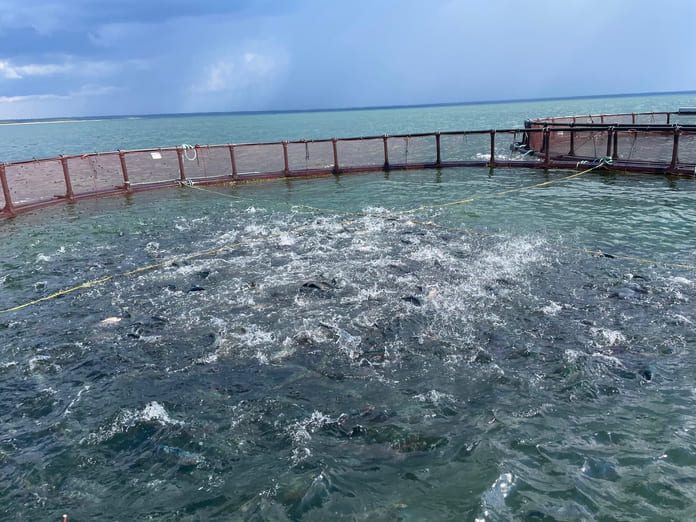Dealing with Baltic heat.
The Baltic Sea is currently experiencing large temperature swings and low oxygen waters, a challenge for any fish farmer.
Keeping a very close eye on this is Saaremere Kala aquaculture division manager Margus Rebane.
“We have different sites in Estonia we have 200 tonnes produced per year. If you go to Finland, we have 1000 tonnes produced per year,” he said, explaininging he is dealing with warmer waters in those sites.
Getting warmer
Rebane belongs to the management boards of the Saaremere Kala and Heimon Kala Oy and Överumans Fisk, which are all subsidiaries of PRFoods. PRFoods is the Tallinn Stock Exchange-listed Estonian owner of John Ross Jr and Coln Valley.

“If you are looking in Canada then it’s double everywhere. And the biggest problem with summers and not so much rain, our winters are getting warmer and we don’t have too much snow in wintertime,” said the trout farmer.

Bad combination
“But deep water is still cold and when I measure water temperature, it can be that the surface temperature is 24 but the bottom is 10-15 degrees under 15m. I’m not so worried when oxygen is good. It’s getting a bad combination when it’s hot and poor oxygen,” he said.
Rebane regularly measures waters in both the Turku archipelago, Finland, and on the Estonian coast of Saaremaa.
He explained that it’s tricky to find a good and safe feeding strategy with the main focus to keep fish in good condition that they will survive. Currently, all the farms are pretty good because in Finland there are quite strong currents. But one has to adapt to the fast-changing nature of temperature.
A challenging environmental mix can inhibit growth in salmonoids, affecting appetite and metabolism.
Kuumaa on #Itämeri‘llä. Näyttää siltä, ettei 4 °C:seen ulottuva skaala meren pintalämpötilan poikkeamassa referenssijakson 1985-2001 keskiarvosta pian enää riitä. #BalticSea #ilmastonmuutos #ClimateChange Lähde: @dmidk pic.twitter.com/YwQTT3bJtg
— Seppo Knuuttila (@KnuuttilaS) July 5, 2021
React immediately
“One has to be awake all the time and react immediately. And most importantly, I have to remember what happens after two weeks I should in some way predict all the time what is happening. Because if conditions are getting worse, I should start reduction feeding today not after two weeks as it will be already too late,” said Rebane.

“We follow all our farm’s water temperature, oxygen, oxygen saturation online and follow weather forecast, mixing current data with forecast and historical experience we make feeding decision,” he added.
“I am not so worried at the moment, but if this warm weather continues for a long time then the second half of July and August will be very difficult because then we have dark nights and then plants that are producing oxygen at the moment starting to consume oxygen at night time, what can lead to very low levels,” he said.

Long-term it’s a bit dramatic
“It’s a danger if the heat continues for a long time,” he said.
What happens then?
“It means we have to be extremely careful. Most important is that we are not overfeeding. We keep it in a good condition. We can see that every fourth year, it’s quite warm. And now it seems that the temperature is getting warmer and warmer. Long-term it’s a bit dramatic because if it continues, warmer and warmer summers more frequently. That is a good question what happens,” concluded Rebane.

